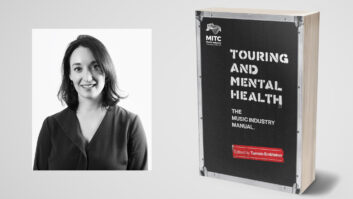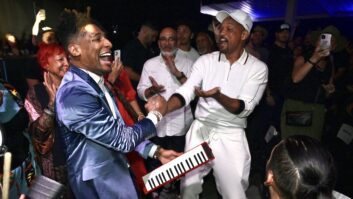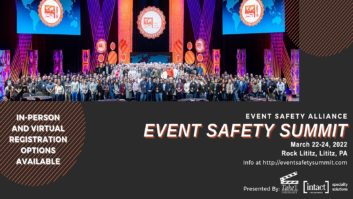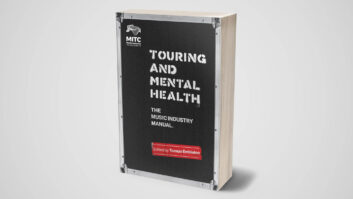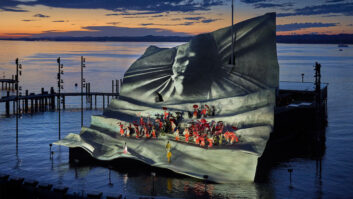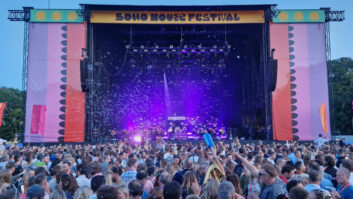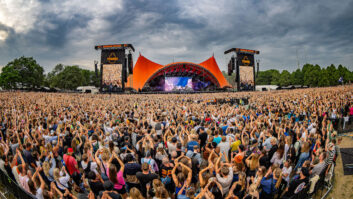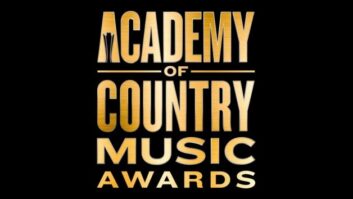
SFX sets up a command center at each festival, where it monitors security, operations, weather, traffic/mobility and more.
No matter the size of a festival, producers look at their multi-day events as a community—and with anywhere between 5,000 and into the 100,000s of people flocking to a festival site daily, organizers need to plan for the same risks you would find in a town or neighborhood of the same size. However, with these festival communities packed into a smaller outdoor setting, producers are able to hone in on more specific safety and health risks that come with the festival territory, ranging from crowd control, overheating and dehydration, to drug and alcohol consumption, and prepare ahead of time for these and other potential risks.
SFX Entertainment, Inc., a leading producer of many live Electronic Dance Music (EDM) festivals in both the United States and Europe, including Mysteryland, Tomorrowland and Sensation, allocates a large chunk of its budget for each festival towards health and safety.
“Our goal at SFX is to spare no expense in order to be the best host possible when it comes to health and safety,” said SFX’s medical and safety director, Dr. Andrew Bazos. “On our grounds, we make sure the level of care is like that in an emergency care setting.”
Health and safety is also a large topic covered at the annual International Music Festival Conference in Austin, TX, with many sessions stressing the importance of preparation before a festival begins.
“Our priority at the conference is to address the safety of the festival patrons—organizers want to make sure everyone goes home in one piece,” commented Laurie Kirby, president of the IMFCON. “Panels at the conference are designed specifically for a variety of things, from harm reduction to addressing drug and alcohol abuse. We also discuss weather-related safety issues, because not only are we concerned with what people are putting into their bodies, but also the environment around them.”
BEFORE THE EVENT
The IMFCON suggests producers do as much as they can to protect attendees, starting with educating them about potential hazards before the festival. “It’s really about event preparedness and communication to attendees, educating them about and making them aware of the risks and the medical services available at the festival,” Kirby said.
Before any SFX-sponsored event, the company provides attendees with detailed information about suggested best practices while at the festival.
“Our health and safety approach starts before the event starts with public service announcements, followed by a screening at the gate,” said Bazos. “We have EMTs at the gates to make sure people are in good shape when they come to the show. It’s hard to have a good time if they are coming in a bad position, and we won’t allow anyone in who might put themselves or others in danger.”
Founder’s Entertainment, the production company behind New York’s Governors Ball, follows a similar protocol, providing attendees with information regarding drug and alcohol use, dehydration and more through social media and email blasts.
SFX and Founders also keep track of every medical incident that comes through their tents, even if it’s just a bruise or small cut, in order to prepare for those scenarios properly at future festivals. “In the practice of medicine, we make it a point to record data to better the job we do as a doctor. The more we can learn from our data, the better we can improve our coverage,” Bazos said.
“Every single person that comes through our medical tent is documented,” said Founders Entertainment co-founder Tom Russell. “On a four-hour cycle, we get a report on how many people were attended to and if there are any transports, and we share all that data with the police and Department of Health.”
AT THE FESTIVAL
With its main priority centered on providing a fun and safe environment for all patrons, SFX sets up multiple medical tents throughout each festival site, employed with medical professionals ready to treat anything from blisters to dehydration.
“In terms of personnel, our policy is to have an emergency medicine physician on site, equivalent to going to an emergency room,” explained Bazos. “That way, if you’ve had, for example, too much to drink, you can walk into our main medical tent and get top-notch, on-site care.”
SFX also provides a trained team of paramedics to assist in any medical emergency either at the tent or on the grounds. Many of the paramedics patrol the grounds looking for anyone showing signs of distress, so they can offer help before things get worse. “The signs and symptoms of someone not doing well are pretty obvious, even for an untrained person. Our team will do a quick medical evaluation in one of those situations and make sure the person is comfortable and oriented about what is going on,” explained Bazos.
Crowd control is also a factor in SFX’s medical plan, where injuries such as broken bones or concussions are more common. “Those injuries are generally very easy to stabilize and if they are more serious, the patient will get transported. When you put 50,000 people in a field to dance, there will be injuries, and we’re prepared for those,” Bazos said.
Founder’s Entertainment has a full safety plan set in place for its festivals, addressing all scenarios, like hurricanes, tornados or other weather-related incidents, as well as gun violence, terrorist attacks and more. A separate section within this emergency plan includes dealing with medical incidents. “We definitely put a lot of emphasis on patron safety and security. Our priority as producers is to do whatever we can to make sure everyone is having fun and is safe,” Russell said.
Dehydration is another big issue at festivals, especially during the summer months, where festivals are predominantly held in large, open fields with minimal shade. This adds extra risk for attendees, requiring producers to both provide free water refill stations at festivals and encourage everyone to stay hydrated. “Many of our shows have free filling stations, and we’re also aggressive about replenishing electrolytes and providing electrolyte gum and packets,” Bazos said.
A RISE IN DRUG USE?
In the past few years, music festivals, specifically those that cater to the EDM genre, have faced an increasing backlash after a rise in drug- related deaths at the events, with many related to MDMA or ecstasy. In 2014, the industry saw one person die from drug-related causes at the Las Vegas Electric Daisy Carnival and six at the Future Music Festival Asia, while more than 20 people were rushed to the hospital for drug overdoses at the Mad Decent Block Party Music Festival in early August 2014. Many members of the festival industry argue that drug use, and the unfortunate consequences that stem from it, have always been an issue at large festival events, but the rise in drug-related deaths has caused them to address the issue more.
While festival producers cannot control the decisions that attendees make, Kirby said, education and communication are the best ways to keep festival attendees informed about potential risks. “It’s nothing new (drug use and overdoses),” said Kirby. “I will say that the drugs out there are getting more concentrated and more dangerous, and with that, the stakes are higher. People on site are buying drugs and they might not know what they’re getting into, but that’s not just at music festivals. We need to build an awareness of what people are putting into their bodies.”
In 2013, Electric Zoo, one of New York City’s largest annual EDM festivals (presented by Made Event), cancelled its final day after two drug-related deaths. Acknowledging its decision, Made Event has increased its pre- festival education, requiring all ticket holders to watch a PSA on drug use, and the event had drug-sniffing dogs on site during the 2014 edition of the event.
Bazos says age makes a big difference as well when it comes to drug use, as older attendees tend to be more aware of the decisions they make. SFX offers both 18-plus and 21-plus shows, depending on the situation. “I think older people are more aware of their limits in everything, and that means sun exposure, dancing, drinking, etcetera. Everyone makes mistakes and you think as a kid you can do whatever and be fine. Like everything in life, you learn to take care of yourself over time,” Bazos said.
Members of the EDM community are also taking matters into their own hands when it comes to safety, such as with the volunteer organization DanceSafe (www.dancesafe.org), which focuses on promoting health and safety within the EDM community. Launched in 1998, Dance Safe started its efforts towards promoting healthy partying within the underground EDM circuit, but has expanded in recent years with the growing popularity of the genre.
The organization has a large focus on drug use, and offers educational services and drug checking services at events, with the purpose of providing people with the resources and information necessary to prevent a potentially harmful situation. Missi Wooldridge, Executive Director of DanceSafe, said that an open dialogue needs to be created to promote safe decisions, versus ignoring or prohibiting the use at all.
“When we do really open our eyes, no matter what we do, people are still going to use substances. We want to create a safe space for young people to come and ask about health and safety,” said Wooldridge. “One of the biggest barriers is implementing drug education and services into the festival community. There’s not a lot of educational resources for people, and that’s a big issue.”
Wooldridge said there is an influx of drugs coming through in recent years that are more potent, or a mix of various substances, causing more problems for users. This, in turn, requires more education on safe usage and drug testing so if someone chooses to make a poor decision, they aren’t aware of what they are putting into his or her body.
“There’s a lack of knowledge with these new substances, and there’s no regulation. The big problem is they are taking something that’s actually something else, and the effects and dosages might be completely different than what they expected,” Wooldridge said.
PROTECTING HEARING AT FESTIVALS
One of the less-addressed medical issues at festivals is that of hearing loss, a common side effect of any live concert event where attendees or employees are exposed to higher sound levels for a long period of time.
While many festival promoters are not directly addressing this for employees and patrons, numerous companies in the audio industry are producing new gear to help preserve hearing without compromising the quality of the music. Among those companies is Ultimate Ears, which caters to musicians with its line of custom in-ear monitors, as well as special earplugs for crews to help preserve hearing.
“Hearing conservation is based on an eight- hour exposure; if you’re working 16 hours a day at a festival, already you’re at a higher probability for long-term damage,” said Mike Dias, sales director at Ultimate Ears Pro.
After extended exposure to loud sound, or even short-term exposure to extremely loud sound, the ear mechanism protects itself with a sort of compression. Given 16 or more hours of rest, Dias explains, the ear can start to rehabilitate itself. However, constant exposure to harmful sound levels (typically 85 dB SPL or higher) can cause more permanent damage. Ultimate Ears encourages performing musicians to be aware of this danger, and designed custom earplugs with an attenuation of 26 dB without reportedly compromising the quality of sound.
“Whenever someone says ‘earplugs,’ you think of those foamies and you think of it ruining the entire experience,” Dias said. “It sounds like you’re underwater and if you go to a festival, you don’t want to put a barrier on the sound. We offer musician-grade earplugs, one version that are custom-made to the ear, and then a universal earplug that has a linear attenuation that you can pop in and experience the music at a show at a lower volume level (without distorting the sound).
“If you are working at a music festival, it’s absolutely critical to have your ear plugs in. These don’t block anything or interfere with your work; they just block the level of exposure that can be damaging over time,” Dias added.
Understanding that hearing loss prevention is an important consideration for any concert event, festival organizers are aware that more attention needs to go towards it. “We certainly make earplugs available for free,” said Bazos. “There might be a fashion statement against it, but I think it’s a problem that should be addressed more. Overexposure to loud music is a problem in general, and that’s a topic that definitely needs to be explored.”
